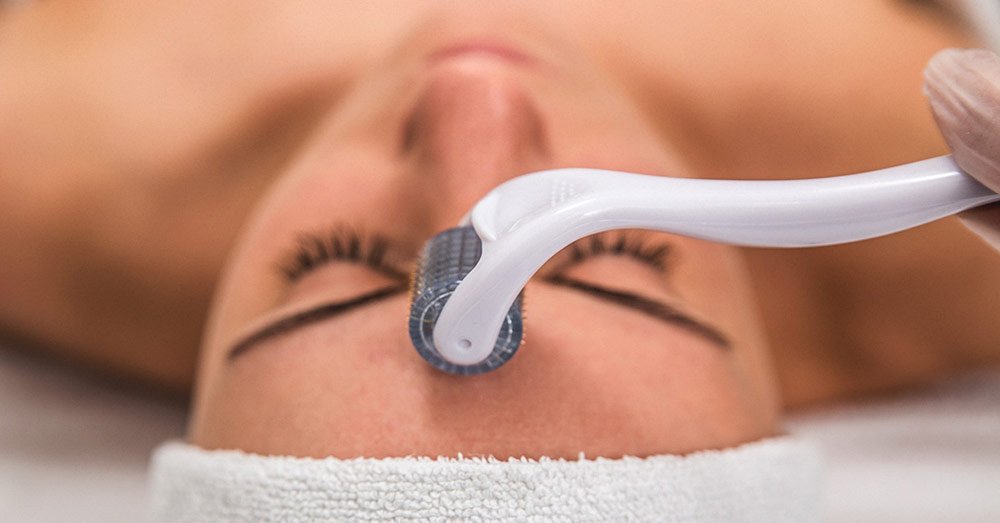Hair loss is a common problem among both men and women. Premature hair loss, hair thinning, or receding hairline are all forms of hair loss. Several contributing factors may be genetic, environmental, hormonal, stress, poor nutrition, some health conditions, and alopecia.
Male pattern baldness (losing hair from the front part of the scalp) is the most common hair loss pattern encountered in men. It has been observed that out of every 10 individuals visiting a hair restoration clinic, 8 are men. Earlier hair loss among men used to happen at the age of 40, which has now come down to 25 years and more so in the IT sector. Hair loss in this sector has become common because of work pressure, improper sleeping, and eating habits.
Individuals, on average, lose approximately 50-100 hair strands per day, and it’s normal. However, losing more than this is a cause of concern and requires medical attention.
Though many other treatment options like topical solutions and medicines are available, many people opt for hair transplants for permanent results.
What is a hair transplant surgery?
A hair transplant is a surgical procedure in which a plastic or a dermatological surgeon moves the hair to a bald area of the head. Hair from the back or the side of the head is generally moved to fill in the front or top part of the scalp.
There are 2 main types of hair transplant surgeries:
- Follicular Unit Transplant – In this method, a strip of skin with hair follicles is removed from the back of the scalp. The hair follicles are then removed from the strip of the skin and placed into the recipient site.
- Follicular Unit Extraction – This method involves the removal of individual hair follicles from the back of the scalp without the removal of the strip of skin. The follicles are then inserted into the recipient site.
Table of contents:
- What to Expect From Hair Transplant Surgery
- How Long Does Hair Transplant Last?
- When Does a Second Hair Transplant Require?
Takeaway
FAQs
What to expect from Hair transplant surgery?
Hair transplant aims to restore hair growth to limited or absent growth areas of the scalp. Although they are considered an effective treatment for hair loss, it is unable to stop further hair loss. Some people may require follow-up transplants for better results.
After undergoing a hair transplant surgery, the scalp might feel sore, and it may be required to take certain medicines to avoid infections and reduce the pain and swelling.
Normally the transplanted hair falls off after 2-3 weeks of surgery. This helps the new hair to grow. However, most people see new growth after 8-12 months of surgery. With proper treatment and guidance from the doctor, the hair continues to grow well. In cases where baldness is very high, multiply procedures might be required to achieve desired results.
The success rate of any hair transplant surgery depends on the thickness of the donor’s hair, the individual’s hair type, lifestyle, age, the extent of hair loss, and the skill of the surgeon.
The most important thing to understand is that hair transplant uses existing hair. If the hair loss is profound, then a hair transplant might not be possible.
How long does a hair transplant last?
Hair transplant is expected to last a lifetime as healthy hair follicles are picked up from the genetically programmed sites for continuous hair growth. When transplanted in the affected areas, the transplanted hair follicles continue to grow hair for a lifetime, retaining their original characteristics.
However, even after a transplant, some people might require multiple procedures to increase their hair density even after a transplant. This is because hair loss is progressive and may continue to happen even after transplant surgery without affecting the hair originally transplanted.
Most people undergoing hair transplants enjoy a high rate of success. Following are certain factors that may limit the potential positive results:
- Continuing hair loss: A hair transplant is not a guarantee for preventing future hair loss. The newly implanted hair may last a lifetime, but the surrounding areas’ hair could continue to fall.
- Adequacy of the donor area capacity: Selecting the proper donor area is important. To get better results from the transplant, selecting a large donor area is very important. This allows the availability of more grafts to ensure better hair growth post-transplant.
- The right clinic and the right surgeon: With the advancement in science, hair transplant techniques have improved manifold. Choosing an experienced surgeon is the most important aspect considered while deciding to undergo a hair transplant.
- Acceptance: Accepting that hair transplants don’t work for everyone is very important. It’s not a miracle cure. Advanced hair loss conditions where the hair follicles have been dormant for 2-7 years or the presence of very thin hair in the donor areas will have poorer results from the transplantations.
All said and done, modern-day hair transplant techniques are safe and natural-looking. The success rate of this procedure is very high and involves minimal risk.
When is a second hair transplant required?
Hair loss is often a progressive process. Though the transplanted hair may be permanent, the patient’s original native hair may continue to thin, as the patient might continue to lose hair from some other area of the scalp.
some reasons, why certain people choose to undergo a second hair transplant are:
- Often people might not get the desired hairline;
- Some people feel that the hair density is not satisfactory;
- Some patients believe that the surgeon could have harvested more from the donor areas and covered the bald spots with more grafts to make them look denser.
- Some patients are not satisfied with the crown coverage;
- A botched transplant or scarring case might also be a reason for opting for a second transplant as a corrective procedure.
Due to this, it might sometimes be necessary to undergo the procedure more than once. The benefits of undergoing multiple hair transplants are:
- Adding density to the previously transplanted area;
- Addressing a new area of baldness;
- Transplanting hair to areas of ongoing hair loss.
While deciding on the second hair transplant, it should be kept in mind that the gap between the 2 procedures should be approximately 6-12 months.
There is nothing scary about the second procedure. It may maximize the benefits of the already done procedure and help correct the fallacies of the previous procedure if any.
Take away:
Hair transplant surgery proves to be a permanent cure for people with baldness. It does not involve any risk and, in most cases, is a very successful technique for combating baldness and instilling self-esteem in people. Although a single procedure is sufficient, multiple procedures may be necessary in some cases. The procedure involves minimal risk when done under the guidance of an expert surgeon.
Alive wellness clinics aim to provide state of an art facility for rejuvenating your skin, body, and hair. Under the expert guidance of Dr Chinranjiv Chabra, Alive wellness has made its name as a holistic solution provider to heal the body, skin, and hair.
FAQ
- How common is baldness?
A normal individual, on average, loses 50-100 hair strands every day. However, for some individuals, this may increase because of stress, heredity, or some medical conditions leading to baldness.
- Who is an ideal candidate for hair transplantation?
An ideal candidate for hair transplantation surgery has healthy hair on the sides and back of the scalp. These are the sites that are used as donor sites. Men and women with well-defined baldness, thinning hair, and those with hair loss due to medications are ideal candidates for hair restoration surgery.
- Is hair transplant a permanent solution for curing baldness?
In most cases, Yes. The hair follicles that are transplanted into the bald areas are the ones that are genetically designed to grow, so they continue to grow on the transplanted areas as well.
- How long does the hair transplantation surgery take?
A transplant session involving 1500-3000 grafts usually takes 6-8 hours.
- Is the procedure painful?
With the use of general anaesthesia, there is generally no pain felt.
- After how many days of the surgery can the patient do physical activities like swimming?
Within 5-7 days of treatment, one can enjoy all the activities they might like.




